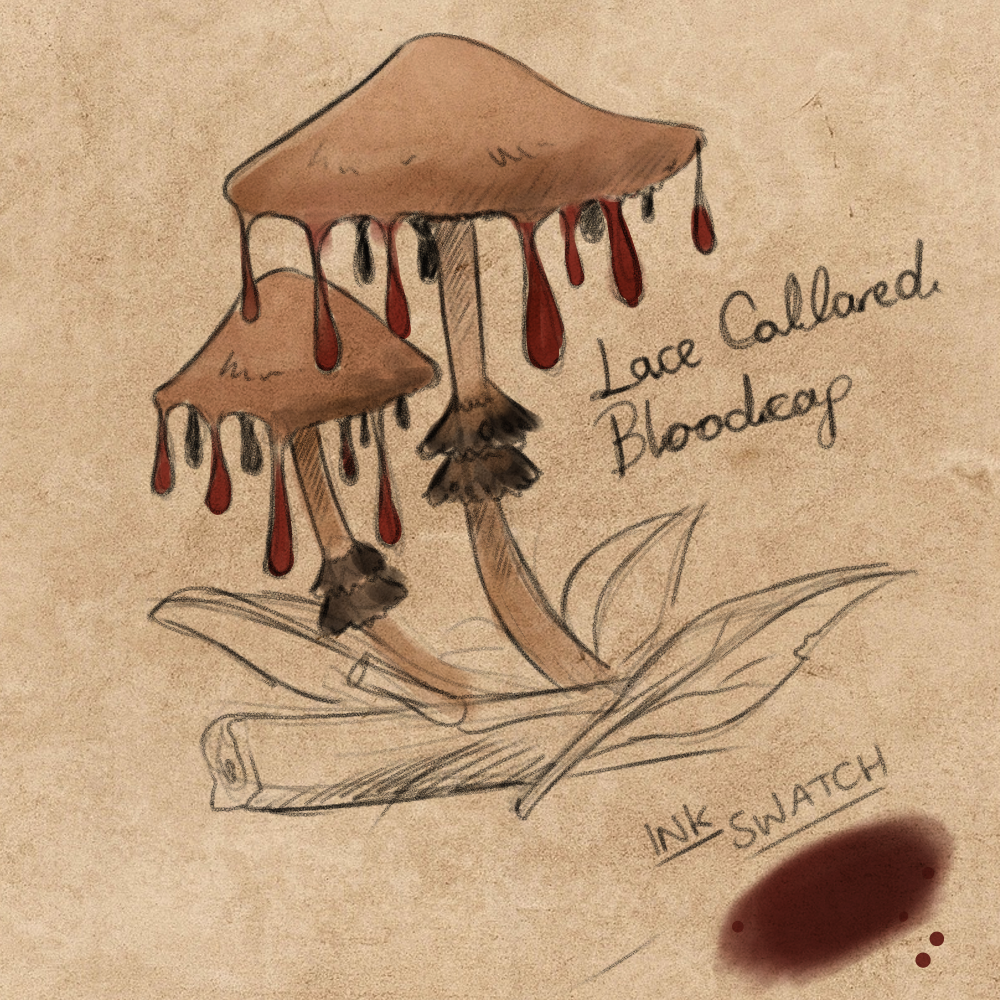Lace Collared Bloodcap or Red Inkycap is a very small mushroom native to Central Sedia. Sprouting in small clumps following heavy rain in autumn, the caps are usually found in shady forest undergrowth where there are well-mulched leaves. This also makes them a common and often unwanted occurrence in well composted gardenbeds, when the spores on from composted leaves remain until the rain comes.
Description
Lace Collared Bloodcaps have a beige-brown cap with a highly identifiable rusty red rim that disintegrates and begins to form inky drips a few days after the fungus matures. Eventually, the entire mushroom head looks like a gorey, black-red mess before the mushroom melts away a wilts entirely. Also present is a striking black lacy collar around the stipe. They are small, ranging from around 6 to 20cm in height, the cap measuring a maximum of around 10cm in diameter. The gills are free and very numerous; beige in colour, before turning quickly to black as the fungus matures.
Uses
The deep burgundy colour that is associated with bloodcaps is fairly easily extractable as a pigment, dye and ink. The mushrooms are mashed at about 2 days old and then slowly simmered until the water is a thick slurry. This slurry is then passed through seives multiple times, until the mushroom flesh is removed, leaving only the fine pigment in a thin slurry. This slurry is then laid out on sheets of metal or flat leaves to dry, or baked until the water is gone. This powder is a pigment known as bloodcap red, and is used primarily as a cosmetic pigment, a clothing dye and writing ink. Notably, this particular colour is used by Kaltia's Wardens to colour their garments and red collars.
Bloodcap Red Pigment Colour
Toxicity
Not highly toxic in small doses, accidental ingestion of a bloodcap is highly unlikely to do anyone harm. However a chemical found in their sap before processing is toxic and bioaccumulates in the body over time. Long-term exposure to the fluids and spores of the mushroom, like that which an inkmaker might face, is considered very dangerous. Harvesters of the mushrooms who frequently come in contact with the fluid that leaks from the broken stems of the mushrooms over many years face skin issues where the mushrooms contact. Longer term, they can cause liver and kidney damage and lead to liver and kidney tumours. The poison in the mushrooms vaporises at high temperatures, also leading to lung issues and lung disease in ink and pigment makers. However, this causes the poison to leave the substance during cooking and when the mushrooms are processed into pigment, the ink is no longer considered toxic.
A travelling naturalist's illustration of a Lace Collared Bloodcap






Comments